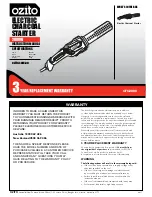
Checking the Process
After 2 or 3 days, check your mix to see if it is getting hot. When your mix is hot, the beneficial
organisms are multiplying and doing their job decomposing materials. Turning the composter 5
to 10 times every 2 or 3 days will mix the materials and keep the process active. Squeeze a
handful of compost to ensure the materials are not drying out. If it feels like a damp sponge, the
water level is fine – if it feels dry, add a little more water (be careful not to add too much) and
turn the composter to mix well.
Depending on the material you added your compost should be ready in 2 to 8 weeks. Finished
compost will contain fine and coarse material. For a fine blend, sift the compost to use in potting
mixes. Use the coarser compost as a nutritious top-dressing around outdoor plantings or till
directly into your garden! You may also use finished compost as a starter for your next batch, or
to heat up a batch that cooled too quickly.
To remove the finished compost, turn the barrel of the composter so the door is facing the
ground and slide the door away from the chamber.
Add new
raw material
Fully rotate
5 Xs - 10 Xs after
each deposit, or
every 2-3 days.
To empty a cured batch:
1. Small tarp or plastic sheet on ground
2. Rotate door to bottom
3. Slide door to open cured content
4. Cured compost will fall out
5. Slide tarp out
Opening the door between the leg-stand will lock
rotation. With the palm of your hand, gently tap
sides to loosen most of the compost. Close the door
and return to upright.
1
2
3
➊
➋
➎
➌
➍
Batch Composting
A
dd
n
ew
m
ate
ria
l
COMPOSTING TIPS
3 Rules of Composting
1)
Quality Materials and Proper Ratio of Greens (Nitrogen) to Browns
(Carbon) – approximately,
1
part greens to
2
part
s
browns
2)
Consistent Moisture - mix should feel like a damp sponge
3)
Good Air Circulation – turn the composter every few days after the
batch heats up to help aerate mix and encourage faster
decomposition
Trouble Shooting
2) Odor
- Ammonia smell means too much
nitrogen (greens) – add dry browns
- Putrid smell ( like rotten eggs) means
mix is too wet and/or not enough
oxygen – add dry browns to absorb
excessive moisture and turn
composter –open air vent
1) Compost Mix does not heat up:
- Mix is too wet – add dry browns
- Mix is too dry – add water
- Mix ratio is off – check green/brown
ratio and add accordingly
3) Problems with Pests/Insects
- Rodents are attracted to meat and fatty foods – remove them
- Flies/insects are attracted to uncovered wastes, especially kitchen scraps – mix or cover
with brown materials or finished compost
For more information, instructional videos, compost accessories
and more composting tips visit
www.
fcmponline
.com
Grasscycling:
Leave grass clippings on your lawn or use them as mulch. This is an excellent source
of nitrogen and helps absorb water.
Small shredded materials decompose faster. Run your lawnmower over pine
needles or leaves and cut up kitchen scraps to speed the composting process.
Forest City Models & Patterns Ltd. Warranty
One (1) Year Warranty on Manufacturer Defects. Warranty excludes cracking from improper use.
For warranty issues, please contact Forest City Models & Patterns:
Forest City Models & Patterns Ltd., 157 Gerald Parkway, Thorndale, Ontario, Canada N0M 2P0
Phone: 519-858-5795 Fax: 519-858-9196 e-mail: [email protected]
Содержание RM4000
Страница 4: ...1 aa ff www fcmponline com...






















